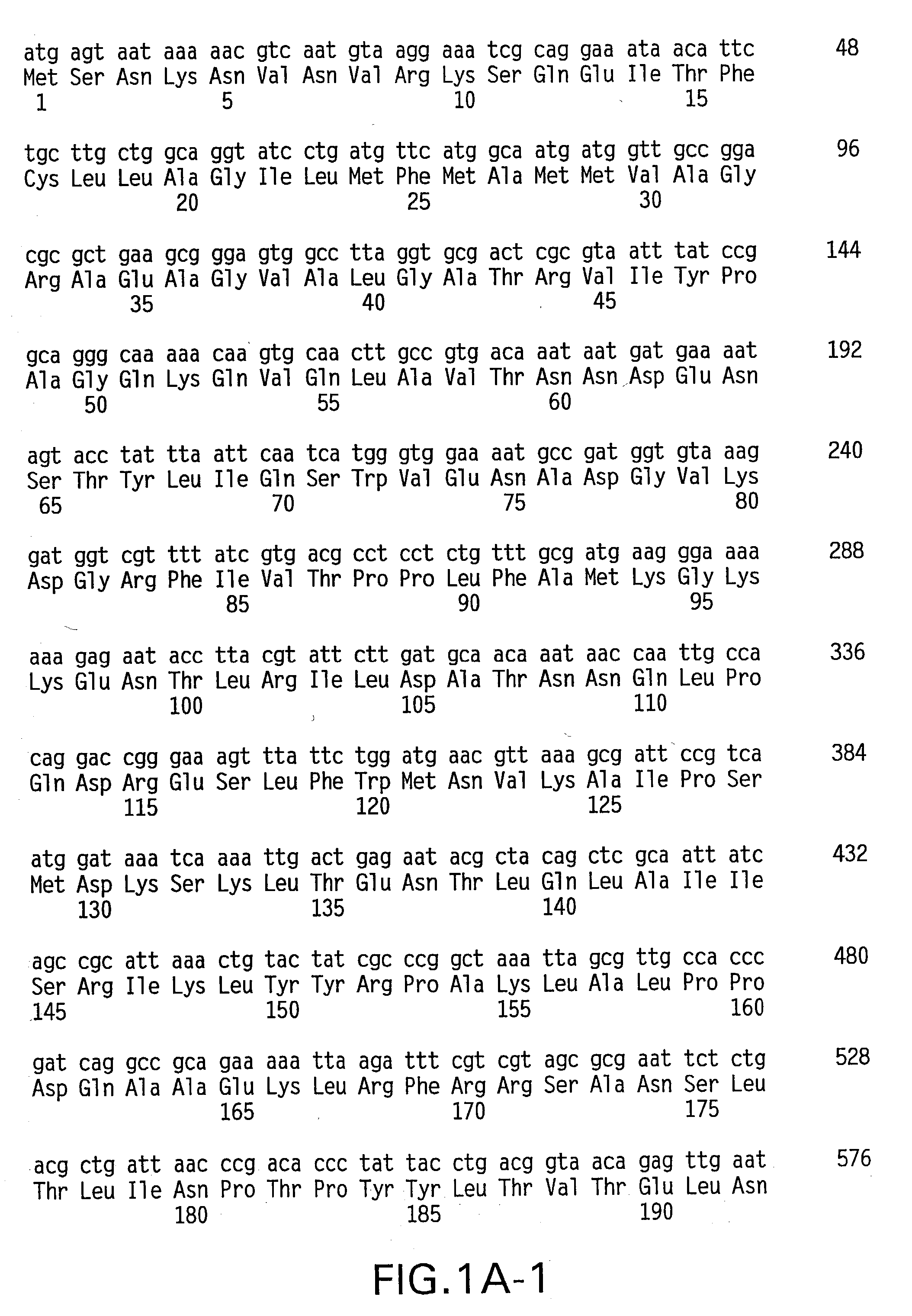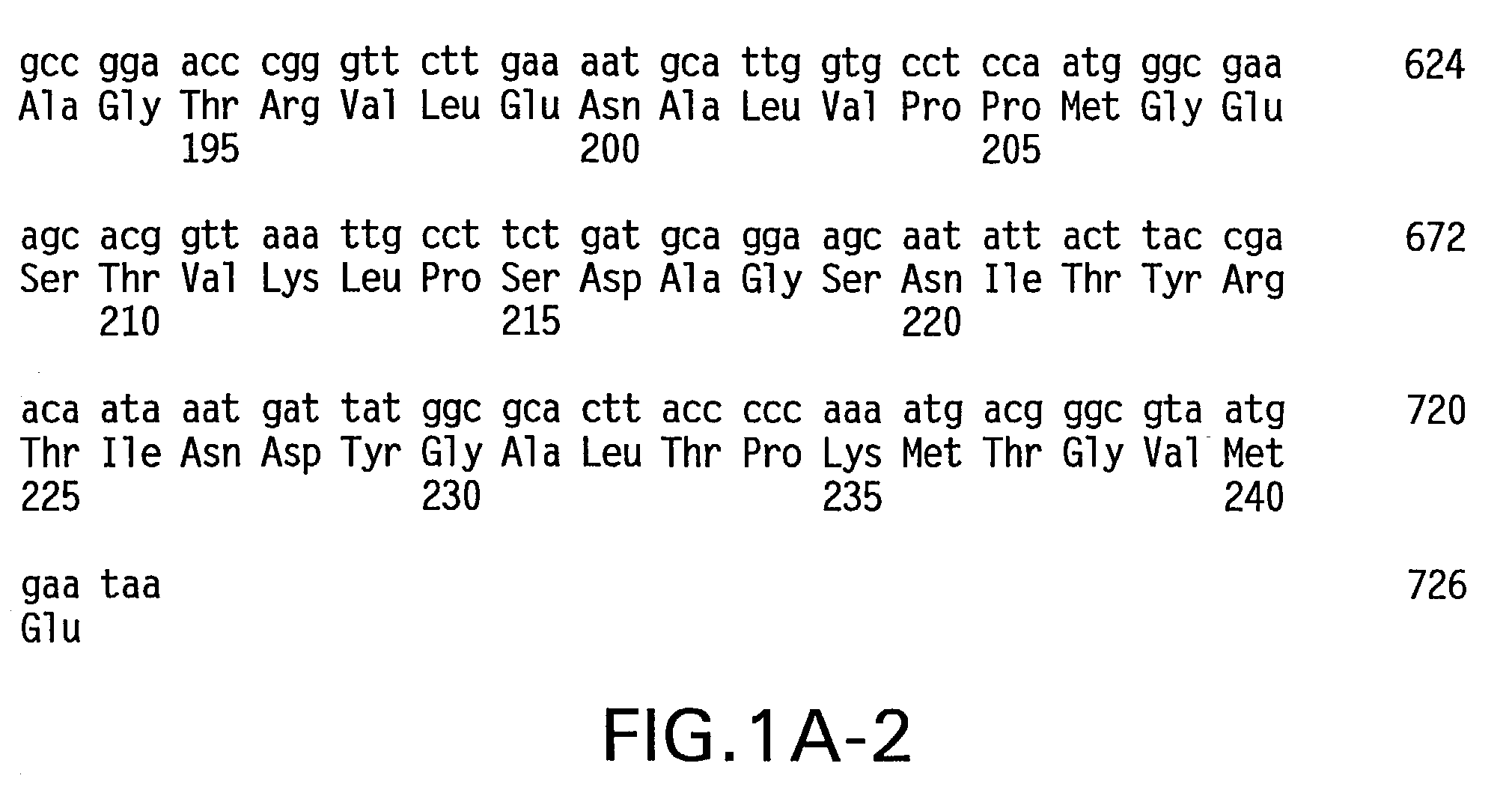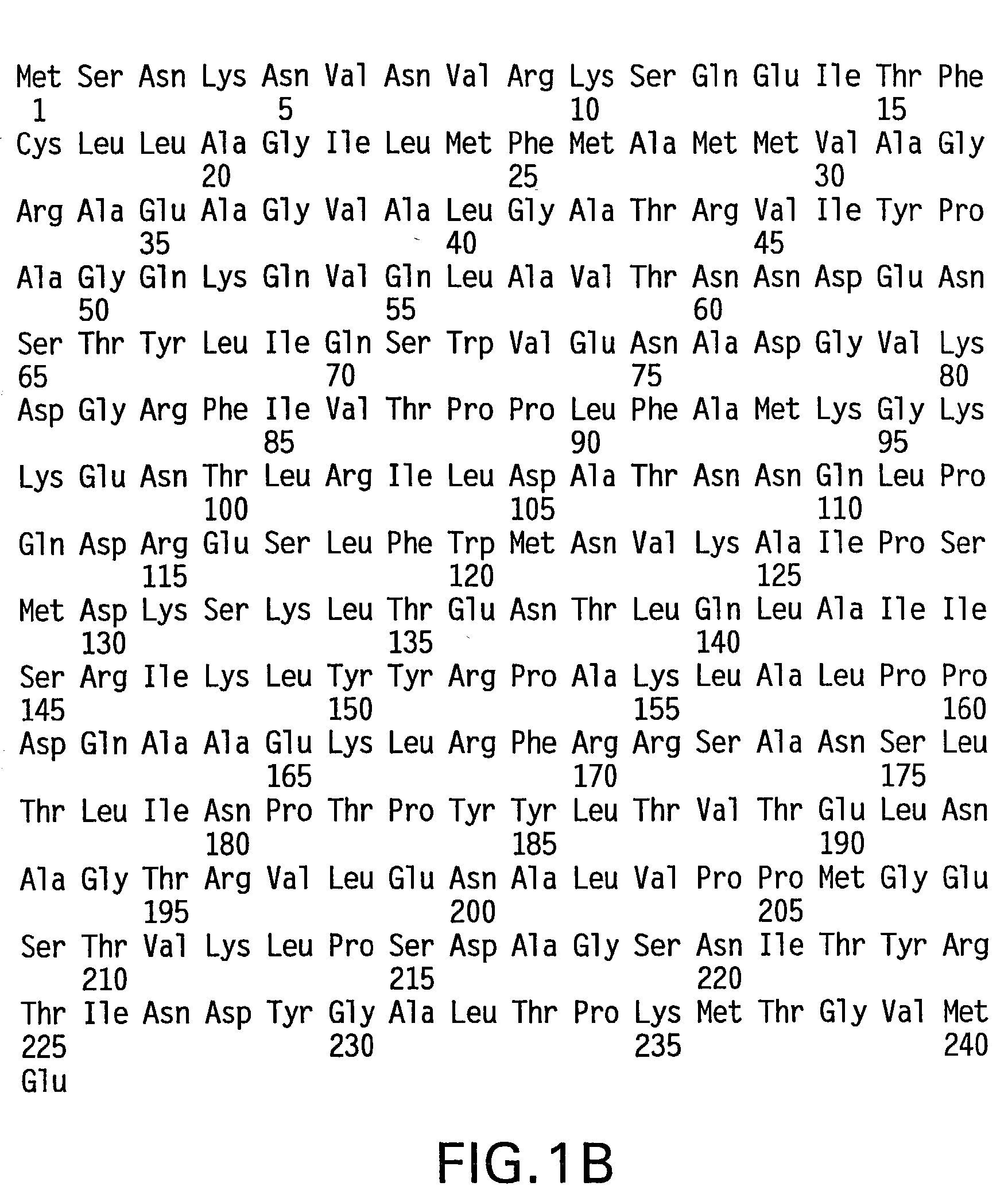Mutant proteins, high potency inhibitory antibodies and fimch crystal structure
a technology of high-potency inhibitory antibodies and mutant proteins, which is applied in the field of producing antibodies, can solve problems such as steric hindrance or agglutination, and achieve the effect of greater functional inhibitory activity
- Summary
- Abstract
- Description
- Claims
- Application Information
AI Technical Summary
Benefits of technology
Problems solved by technology
Method used
Image
Examples
example 1
6.1 Example 1
Characterization of FimH Mutants
[0437] Based on the crystal structure (FIG. 2) of vaccine quality FimCH bound to mono-mannose, the mannose-binding domain on FimH was identified. This domain was in a canyon on the surface of the protein. Furthermore, some of the specific amino acids on FimH mediating the interaction with mannose were identified. A hydrophobic ring around the mannose-binding pocket was also identified. To probe critical structural and conformational requirements of FimH, the crystal structure was used to provide several candidate residues for mutation. The serine at position 62 was mutated to an alanine and used as a control since it does not lay within the pocket or the hydrophobic ring region.
[0438] 6.1.1 Expression and Isolation of FimCH mutants
[0439] Site specific mutations in FimH (see Table 7) were made according to techniques known in the art. A two-step PCR protocol as described for the mutagenesis of papD (Hung et al., 1999, Proc. Natl. Acad. Sci...
example 2
6.2 Example 2
Production of Antibodies
[0477] 6.2.1 Polyclonal Antibodies
[0478] The immunogenicity of purified FimCH variant proteins were assessed by measuring immunoglobulin G (IgG) titer to FimH T3. FimH T3 is a hisitidine-tagged fusion protein composed of the first 165 amino acids of the mature (279 amino acids) FimH protein.
[0479] C3H / HeJ mice were immunized on day 0 (primary immunization) and booster immunized during week 4 with one of the 7 purified antigens: wild type FimCH (from strain J96), wild type FimCH (vaccine composition), FimCH D140E, FimCH N46D, FimCH Q133K, FimCH Q133E, and FimCH Q133H. Injections were at doses of 4.0, 1.6, 0.64, and 0.26 .mu.g in MF59 adjuvant (Chiron, Emeryville, Calif.).
[0480] Samples from individual mice treated identically were pooled for serological analysis and diluted 1:100 before serial dilution. Antibody responses were assessed by an ELISA with purified FimH T3 as the capture antigens. The purity of the protein preparations of the capture ...
example 3
6.3 Example 3
Inhibitory Properties of Polyclonal Anitibodies
[0487] 6.3.1 In Vitro
[0488] Functional inhibitory properties of polyclonal antibodies were measured by the ability to block binding of type 1 piliated bacteria (E. coli strain NU14) to guinea pig erythrocytes in a hemagglutination assay and by the ability to inhibit E. coli binding to block binding of type 1 piliated bacteria (E. coli strain NU14) to transformed human bladder J82 cell line.
[0489] Hemagglutination Assay
[0490] The bacteria were directly labeled with fluorescein isothiocyanate (FITC) and incubated with the antibody to be assayed for 30 minutes at 37.degree. C. The bacteria / antibody mixture was then added to the erythrocytes and allowed to incubate. After multiple washes, mean channel fluorescence was used as an indicator of the amount of FITC-labeled bacteria remaining (and thereby is an indication of the strength of the interaction between the FimCH complex on the E. coli and mannose). Lysis II software (Bect...
PUM
| Property | Measurement | Unit |
|---|---|---|
| Molar density | aaaaa | aaaaa |
| Molar density | aaaaa | aaaaa |
| Molar density | aaaaa | aaaaa |
Abstract
Description
Claims
Application Information
 Login to View More
Login to View More - R&D
- Intellectual Property
- Life Sciences
- Materials
- Tech Scout
- Unparalleled Data Quality
- Higher Quality Content
- 60% Fewer Hallucinations
Browse by: Latest US Patents, China's latest patents, Technical Efficacy Thesaurus, Application Domain, Technology Topic, Popular Technical Reports.
© 2025 PatSnap. All rights reserved.Legal|Privacy policy|Modern Slavery Act Transparency Statement|Sitemap|About US| Contact US: help@patsnap.com



